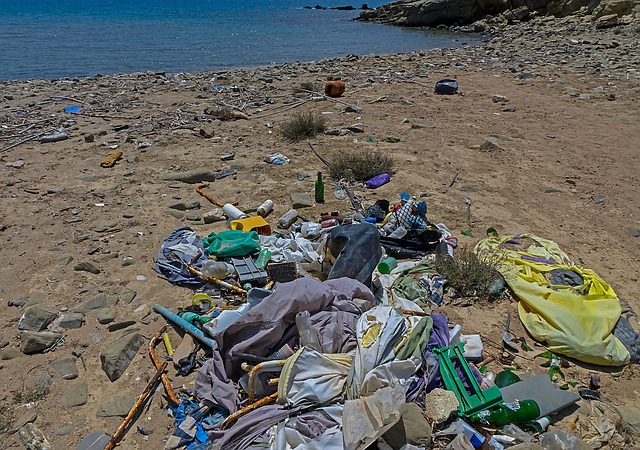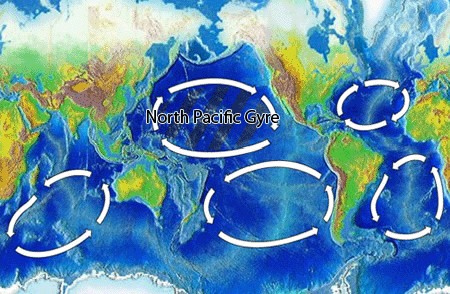We live on a blue planet. 71 per cent of Planet Earth is covered in water, and our oceans contain an estimated 50-80% of all life on earth. Given the vastness of the oceans, it almost seems inconceivable that human beings could be putting our marine ecosystem in danger, but that is exactly what is happening.
The mass production of plastic, combined with a ‘use it then chuck it’ culture has had terrible consequences for the health of our oceans.
Scientists are still investigating the effects of plastic pollution on the oceans, but what has already been discovered has sent shockwaves of alarm around the world.
Keep reading to learn ten ways in which plastic is polluting our oceans, and causing harm to the animals that live in it.
- 1. There is now more microplastic particles in the oceans than there are stars in our galaxy.
- 2. About 8 million metric tonnes of plastic finds its way into the ocean annually
- 3. Every piece of plastic that has ever been made still exists
- 4. The amount of plastic in the ocean is set to treble in the next decade
- 5. At the current rate, plastic will outweigh fish in the ocean by 2050
- 6. Sixty per cent of the plastic in the oceans comes from either China, Indonesia, the Philippines, Thailand or Vietnam.
- 7. Nearly all of the world’s seabirds have eaten plastic
- 8. The top ten most common types of litter found on beaches are all made of plastic
- 9. The Great Pacific Garbage Patch is now four times the size of France
- 10. There is hope for the future
1. There is now more microplastic particles in the oceans than there are stars in our galaxy.
When you think of plastic in the ocean, what comes to mind? Possibly plastic bottles and containers bobbing on the surface of the water. While this type of pollution certainly exists and is a huge problem, perhaps a bigger danger to the marine ecosystem is the threat from microplastics.

Plastics do not decompose in the same way as organic materials such as paper or wood. Rather, plastic breaks into smaller and smaller pieces over time. The impact of microplastics is still being studied, but what we do know is that fish swallow these tiny plastic particles, where they work their way up the food chain, and can often end up being ingested by humans.
When these pieces of plastic measure under 5mm in length, they are categorised as microplastics. And they are bad news for the ocean.
In one scientific study, it was estimated there are between fifteen and fifty-one trillion individual pieces of microplastic in the world’s oceans. By comparison, there are between 150 – 250 billion stars in our galaxy.
2. About 8 million metric tonnes of plastic finds its way into the ocean annually
Year by year, the plastic pollution crisis in our oceans is getting worse. Very little of it is being removed, while at the same time about 8 million tonnes of additional plastic is finding its way into the ocean every year. To put that into perspective, that’s roughly the same weight as 130 million average-sized humans, entering our oceans every year.
3. Every piece of plastic that has ever been made still exists
Plastic is amazingly durable. So much so that every single piece of plastic that has ever been manufactured is still in existence in the world.
Plastic will decay over time when exposed to the sun, but it never truly disappears. Rather, it breaks into smaller and smaller pieces, until the particles are only visible under a microscope.
4. The amount of plastic in the ocean is set to treble in the next decade
The plastic pollution problem is not getting better, in fact, it’s set to get much worse.
Fossil fuel companies are spending billions of dollars to ramp up their production of plastic. The technology to manufacture plastic is improving, meaning it can be churned out faster, cheaper and more efficiently than ever before.
Carroll Muffett, president of the US Center for International Environmental Law said:
“WE COULD BE LOCKING IN DECADES OF EXPANDED PLASTICS PRODUCTION AT PRECISELY THE TIME THE WORLD IS REALISING WE SHOULD USE FAR LESS OF IT.”
Carroll Muffett, president of the US Center for International Environmental Law
5. At the current rate, plastic will outweigh fish in the ocean by 2050
According to the Ellen Macarthur Foundation, plastic production has increased from 15 million tonnes in the 1960’s to 311 million tonnes in 2014 and is expected to triple by 2050.
If no action is taken, by 2050, the weight of all of the plastic in the ocean will outweigh all of this fish in the ocean.
6. Sixty per cent of the plastic in the oceans comes from either China, Indonesia, the Philippines, Thailand or Vietnam.
What’s so special about these 5 countries? Well, they are all developing at a rapid rate, which includes an uptake in the amount of single-use plastics they use.
China is now the world’s biggest consumer of bottled water. Bottled water sales in China have exploded in recent years, up from $1 billion in 2000 to more than $14 billion in 2014.
However, despite rapid economic development in these countries, their waste disposal technology has failed to keep pace.
Plastic in these countries often ends up in rivers. In fact, one study suggests that 95% of the plastic in the oceans comes from just ten of the world’s rivers.
7. Nearly all of the world’s seabirds have eaten plastic
According to a report by a group of Australian scientists, around 90% of seabirds have ingested plastic into their bodies. In fact, 29 per cent of birds had plastic fragments found in their guts.
The same report goes on to say that by 2050, it is estimated 99% of seabirds will have ingested plastics at least once.
There are numerous health complications that can arise when birds ingest plastic, including choking, intestinal obstructions, stomach issues. Ingesting large amounts of plastic can often lead to death.
8. The top ten most common types of litter found on beaches are all made of plastic

The following data comes courtesy of Ocean Conservancy’s International Coastal Cleanup, which involved people from all over the world giving up their time to clean their local beaches. 800,000 volunteers removed more than 20 million pieces of litter. A fantastic achievement.
The types of litter they collected were carefully documented. Below you can see the top ten most common pieces of litter they found:
- Cigarette butts (2,412,1510)
- Food wrappers (1,739,743)
- Plastic beverage bottles (1,569,135)
- Plastic bottle caps (1,091,107)
- Plastic grocery bags (757,523)
- Other plastic bags (746,211)
- Straws and stirrers (643,562)
- Plastic takeaway containers (632,874)
- Plastic lids (624,878)
- Foam takeaway containers (580,570)
9. The Great Pacific Garbage Patch is now four times the size of France

The Great Pacific Garbage Patch is an area in the Pacific Ocean covered by marine debris (garbage). The patch is formed by ocean currents pulling in garbage from surrounding areas, where it accumulates and does not escape.
It has been estimated the Great Pacific Garbage Patch contains 1.8 trillion pieces of plastic, and weighs around 80,000 tonnes. One study claims there are 334,721 pieces of plastic per square kilometre.
The following quotation comes from Henry Moore, who sailed through the garbage patch, and witnessed first hand the scale of the issue:
“WHAT WE SAW AMAZED US. WE WERE LOOKING AT A RICH BROTH OF MINUTE SEA CREATURES MIXED WITH HUNDREDS OF COLORED PLASTIC FRAGMENTS—A PLASTIC-PLANKTON SOUP.”
Henry Moore
Moore also documented some of the objects he found while traversing the garbage patch. They included:
- a drum of hazardous chemicals;
- an inflated volleyball, half covered in gooseneck barnacles;
- a plastic coat hanger with a swivel hook;
- a cathode-ray tube for a nineteen-inch TV;
- numerous plastic, and some glass, fishing floats;
- a gallon bleach bottle that was so brittle it crumbled in his hands
10. There is hope for the future
David Attenborough’s incredible Blue Planet II sent shockwaves of alarm around the world, and people are beginning to wake up to the scale of the problem.
Take, for example, ‘The Ocean Cleanup’, described as ‘the biggest cleanup in history’. Using advanced technology, they aim to clean up 50 per cent of the Great Pacific Garbage Patch every 5 years.
Blue Planet II has also caused people to consider their own relationship with single-use plastics. We are more likely than ever to refuse plastic shopping bags, to abstain from buying bottled water, or to bring our own cups to coffee shops.
The scale of the problem is massive and intimidating, and it will take time, but the world has finally woken up and decided that enough is enough, something must be done.
